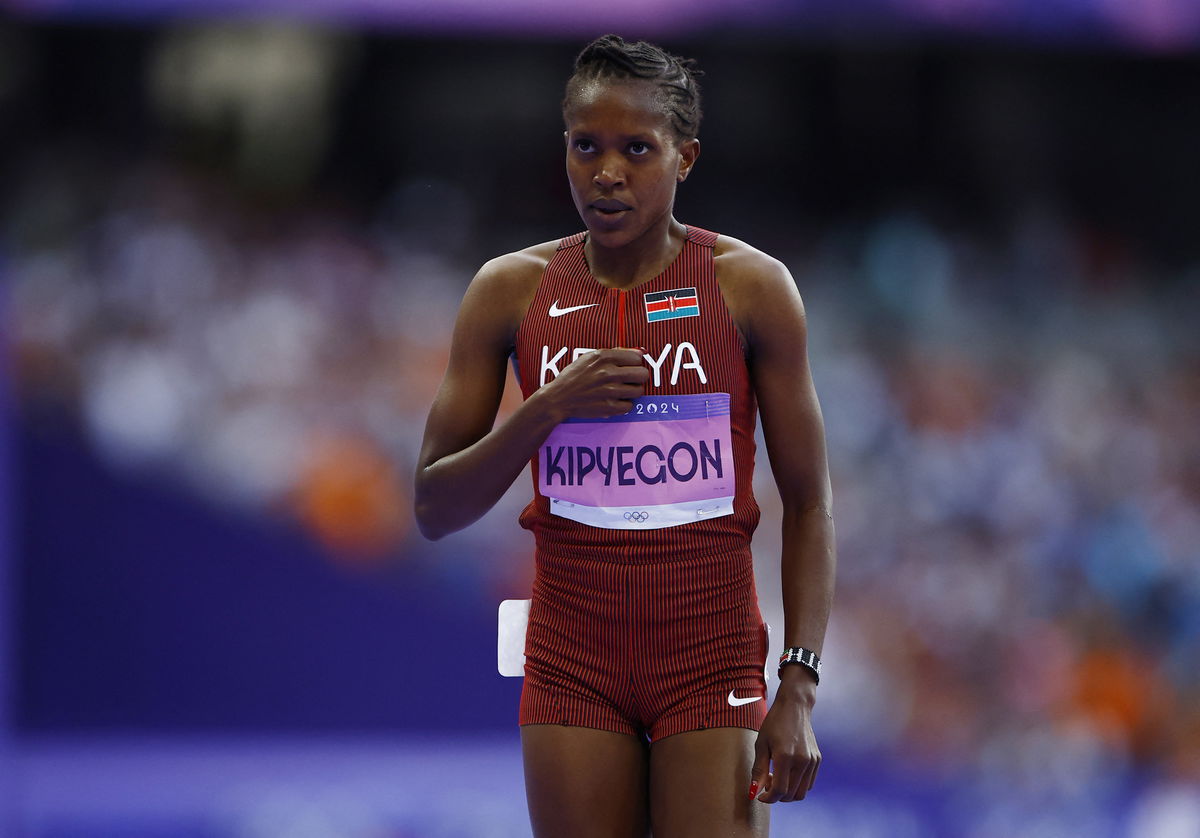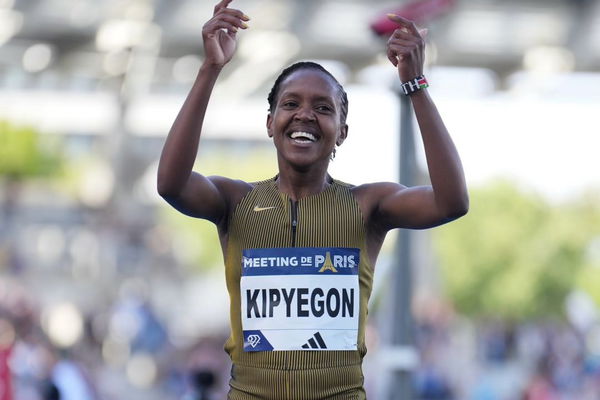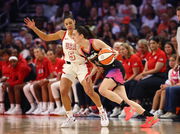
Reuters
Paris 2024 Olympics – Athletics – Women’s 1500m Semi-Final 1 – Stade de France, Saint-Denis, France – August 08, 2024. Elle Faith Kipyegon of Kenya react after winning the race. REUTERS/Sarah Meyssonnier

Reuters
Paris 2024 Olympics – Athletics – Women’s 1500m Semi-Final 1 – Stade de France, Saint-Denis, France – August 08, 2024. Elle Faith Kipyegon of Kenya react after winning the race. REUTERS/Sarah Meyssonnier
Faith Kipyegon lit up Monaco on 21 July 2023, running a stunning 4:07.64 mile at the Herculis Diamond League, breaking through Sifan Hassan’s previous 4:12.33 by nearly five seconds. That night at Stade Louis II, she struck perfectly, settling behind pacemakers, accelerating at the bell, and closing in about 60 seconds to claim her third world record in just two months. This iconic run now stands as the official women’s world mile record, but Faith Kipyegon is still not done yet. She was looking to break this record as well.
Watch What’s Trending Now!
She partnered with Nike, who launched Breaking4 – an attempt to run the mile within 4 minutes, something that has not been done by a woman. Equipped with next-gen spikes, an aerodynamic full-body suit and bra, and a large entourage of male and female pacers forming a wind-breaking shield, she sliced her record again with a 4:06.42 clocking (adjusted from 4:06.91). It did not matter, though, because it was unrecognized by World Athletics, and far worse, she wasn’t even close to the target of sub-4. Now, a track and field expert weighs how this event was doomed to fail.
Adam Jansen took to YouTube on July 1st to break down the reason why this attempt failed. To start with, the goal was very impractical. Faith to run a sub-4 mile had to break her very own world record by 7 seconds. It’s not just hard, it’s nearly impossible. The most dramatic increase in the 4-mile world record was when Paula Ivan clocked 4:15.61, breaking Anne Smith’s 4:37.0. But this ~21 seconds of difference took 22 years. There was a paper that surfaced which said that if Kipyegon had two pacers, one in front to break the wind resistance and one behind her to break the wind turbulence that pulls her runner back, she could potentially run a 3.59 mile.
ADVERTISEMENT
But that paper did not scan Kipyegon’s body or exact proportions, instead using estimates and respected equations to calculate the potential wind resistance on her body. Coming to shoes, Nike did tweak Kipchoge’s spikes a bit—made them lighter and adjusted the fit to suit his stride—but there wasn’t any game-changing tech like carbon plates or super foam. Nothing major that would boost performance. She might have had Sha’Carri Richardson’s blessing, but without the super spikes, it was going to be impossible. When Kipchoge ran a sub-2-hour marathon, he used Nike Zoom Vaporfly Elite for Breaking2.

ADVERTISEMENT
This prototype featured a thick ZoomX foam midsole with a full-length carbon-fiber plate, a lightweight Flyknit upper, and an aero heel that reduced drag. Intelligently tailored to each athlete, the shoe was designed to boost running economy by around 4 %. Another reason? Faith Kipyegon had a shield of 5 runners at the front to block the incoming wind and a spoiler of runners at the back. There was then an additional curved wall of runners designed to guide the wind around Kipyegon as much as possible.
ADVERTISEMENT
Nike made this complex pacing change last minute, and you could tell—it was messy on race day. In lap three, some pacers were nearly 30 meters ahead, which defeats the purpose since drafting only works if they’re close. Originally, they planned a tight five-person wedge, like in the Ineos 1:59 setup, but scrapped it last minute over tripping concerns. And like Adam said, “the decision to scrap one of the main ways they thought they could boost performance so close to the attempt is just one of the many reasons I think this is a poorly organized event and why I think they never really gave Kipyegon a shot of it,”
Adam also pointed out that, “She looked uncharacteristically nervous on the line, and I can’t imagine being surrounded by a battalion of elite pacers would have helped things.” Mental health, of course, has a big role to play in any sport, and if Faith Kipyegon had lost faith in the chances of this ever being successful, it was never going to be. But Nike had done it before and successfully.
ADVERTISEMENT
Nike had done it before in their second run – hope for Faith
Eliud Kipchoge’s journey to the sub‑2‑hour marathon unfolded over two meticulously planned events, both backed heavily by Nike. In Breaking2 (May 6, 2017, Monza), Nike orchestrated every element—assembling elite athletes and pacers, optimizing nutrition and hydration, and crafting the prototype ZoomX Vaporfly Elite with full-length carbon plate and ZoomX foam. Kipchoge came close at 2:00:25, powered by this support system.
Two years later, in the INEOS 1:59 Challenge (October 12, 2019, Vienna), while INEOS took lead branding, Nike remained integral, providing a new generation of Alphafly NEXT% shoes with carbon plating, ZoomX foam, AtomKnit uppers, and continued pacer and pacing car support. Kipchoge delivered a flawless performance, clocking 1:59:40.2, breaking the barrier, though not ratified as an official record due to the controlled setup.
Top Stories
Tom Brady Makes Career Announcement for Vegas as Pete Carroll Addresses Losing Raiders Locker Room

Dolphins’ Jordyn Brooks Publicly Calls Out Locker Room Over ‘Poor’ Performance Against Steelers

Cam Newton Makes NFL Return Conditions Clear to 32 Teams as Panthers Legend Confirms Retirement Stance

Caitlin Clark Shows Concerning Signs vs. Kelsey Plum During USA Camp Debut, per National Reporter

Andy Reid Makes Final Decision on Signing New Chiefs QB After Patrick Mahomes’ ACL Injury

When an American Legend Confessed to His Long Kept Promise to Dale Earnhardt That He Still Honors

Though we can say here, the first attempt by Nike failed even in the case of Eliud Kipchoge, so who knows, for fate has Faith. She might have left the track and field community in second thoughts, but never say never. Maybe there is a second attempt left for Faith. What do you think?
ADVERTISEMENT
ADVERTISEMENT
ADVERTISEMENT
ADVERTISEMENT

